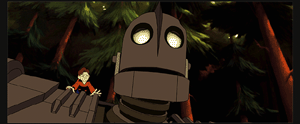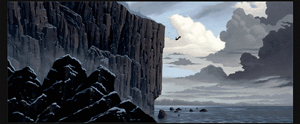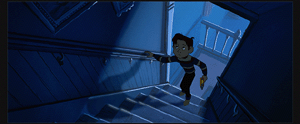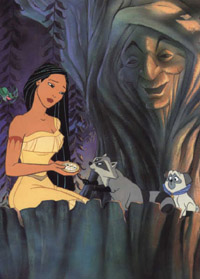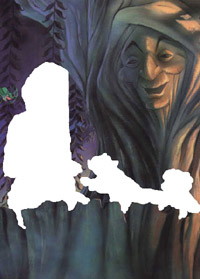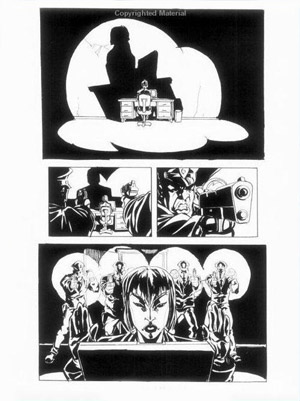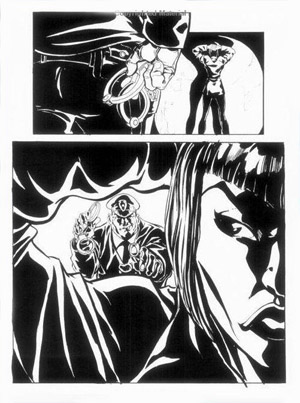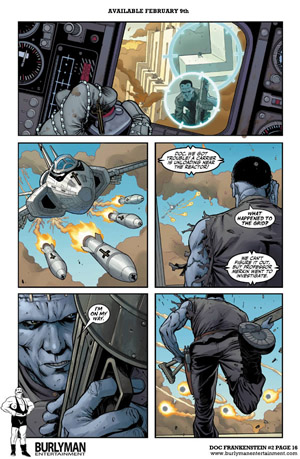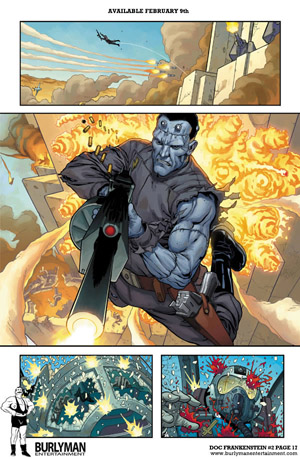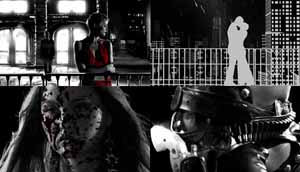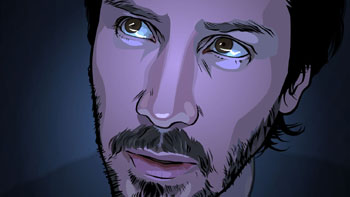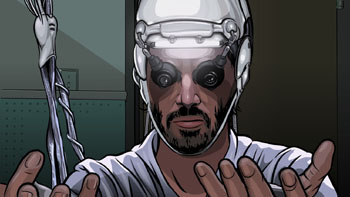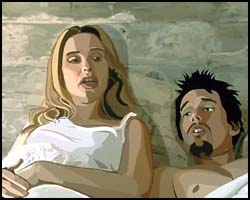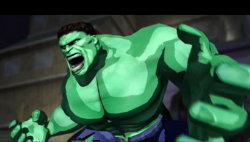
|
Back |
 Home
Home
|
| Animation, Movies & Games |
Animation
Animation can be thought of as a moving coming book. Generally traditional cel animation, if taken on a frame-by-frame basis, is infact a comic book. It even uses more or less the same non-photorealistic rendering style.
Though pure non-photorealistic, when we consider traditional cel-based animation, we can see the clear separation between the background and foreground elements.
The backgrounds are often painted on separate cels in a traditional artistic style with stylistic lighting and a near three dimensional shaded look while the foreground characters retain their two dimensionality.
This basically helps the audience to separate the two elements and allow them to appreciate the art works both as separate entities and also as a cohesive whole which enhances the visual story-telling. This is visual element grouping coming into play. The above example from Pocahontas clearly shows this. Germinating as an idea from the writer's head, from script to storyboards, a movie undergoes tremendous transformations and break-downs before finally attaining the celluloid form. Animation too follows more or less the same path. And during the course of these transformations, there is a stage where the idea is literally "juxtaposed pictorial images in deliberate sequence". For movies and animation, there are the storyboards, for sculpture, there are sketches of the subject from various angles. Storyboards are comics and the quality often depends on the type of storyboards and the storyboard artist. Below given are pages from the storyboards of The Matrix and a comic strip called Doc Frankenstein. Look at the similarity in panel layouts of the storyboard and the comic strip.
Just by looking at the two layouts, we can see the similarities. The only difference is that the storyboard is not a finished product while the latter is. The Matrix is one of the best examples of comic(manga) influence in movie making(live action). The Wachowski Brothers used camera angles that are best seen in Japanese Manga. Just as it can be seen in Japanese Animation or Anime, there is a savory anticipation before the violence erupts.
A Scanner Darkly. A novel by Philip.K.Dick and directed by Richard Linklater. The film is put through a post-production process called Interpolated Digital Rotoscoping.
Richard Linklater's previous movie called The Waking Life featured an early version of the technique used for A Scanner Darkly. The technique uses computer software to manually draw over each frame of the movie giving it a very painterly look and feel.
Interactive media - Computer Games A cross over from the two dimensionality of comic books to the interactiveness of gaming brings along with it a host of problems. In addition to the recreation of the nostalgia of comic books using stylized shading techniques, game creators have to satisfy the high expectations of the game players - increased interactiveness, better story lines, more action and a higher degree of problem solving.
The early Hulk comics created by Jack Kirby and Stan Lee in 1962 were stylistically true Silver Age. And while the inspiration for the game's graphics came from many areas, Bae notes that he was primarily infulenced by Kirby's work from this era. "A cel-shaded graphic style was the first thing that popped into my head when thinking about the game," he says. "I grew up reading The Hulk and other Marvel comics, and what really stood out for me were the colors, rendering techniques, and dynamic composition panels." XIII is a French comic book and UbiSoft adapted the comic book for its cel-shaded game of the same name. Toon shading works very well for interactive entertainement like games, because game and comic book enthusiasts alike are getting a chance to literally "play" a comic book.
|
In a nut-shell - Site Map
(Move cursor over the site-map to bring up info-panels. The large boxes are links.)
| Why use NPR? |

|
Non-Photorealistic Rendering |
|
Aesthetics, Impact |
